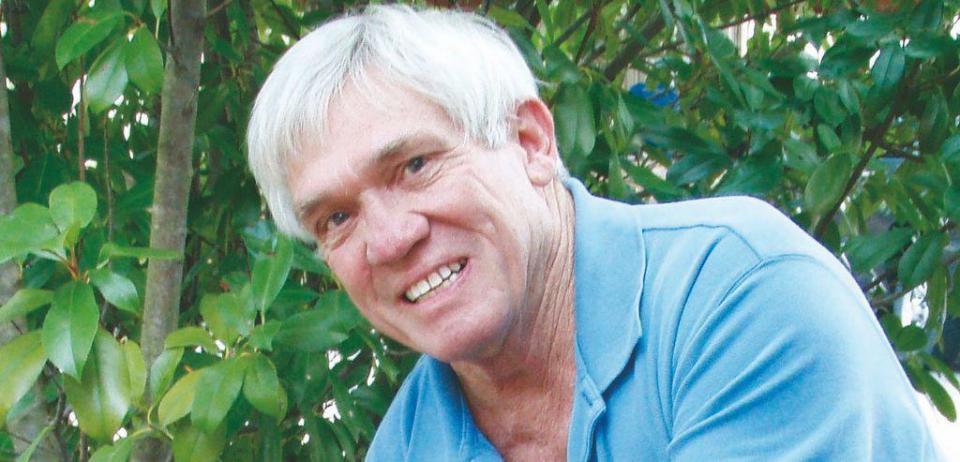Skeletons are for more than Halloween | ECOVIEWS
I have written before about the perfect Halloween-appropriate coffee table book. “The Skeleton Revealed: An Illustrated Tour of the Vertebrates” by Steve Huskey (Johns Hopkins University Press) remains an ideal choice.
A superb blend of science and art, the book simultaneously educates and enthralls. Over the course of many years, Huskey prepared all the skeletons himself from vertebrates found around the world. They are displayed in numerous museums, including the Harvard Museum of Natural History, the California Academy of Sciences and Miami’s Phillip and Patricia Frost Museum of Science. His book lets readers marvel at amazing skeletal exhibits all in one place.
This extraordinary book provides a comparative and seldom-emphasized perspective on the inner structure of vertebrates: fishes, amphibians, reptiles, birds and mammals. More than 300 full-page photographs of some of the most intricate skeletons imaginable are presented on a black background.
A variety of vertebrate groups are represented, permitting anatomical comparisons of bone structure and development. Striking illustrations accompany the well-written text, which explains how different bones — including teeth — function in the species.
The writing is informative, not only about animal names and geographic distributions but also about notable biological aspects of each species presented.
The skeletal head of an open-mouthed king mackerel, “one of the fastest fishes in the sea,” reveals the rows of evenly spaced, razor-edged teeth. The text notes that these marine predators can travel at almost 50 miles an hour and slice another fish in half, “which makes for easier swallowing.” One illustration shows how a king mackerel’s skeleton is designed for speed. Its dorsal fin lies in a groove in the middle of the back, a feature that helps minimize resistance as the fish propels itself through the water. A skeleton of the world’s slowest mammal, a two-toed sloth from tropical America, hangs upside down from a pole by its “long, strong, hook-like claws.”
The book illustrates the elegant architecture of skeletons, each designed for its own purpose in life. A monocled cobra— the front part of its body held high in a threat display and its hood spread wide — reveals how ribs in the region behind the head “are much straighter than others and can be spread widely to expand the neck.” This skeletal array might lead one to wonder whether it’s a slight exaggeration. Do snakes really have that many bones? Yes. Mostly ribs of different sizes.
On the other hand, sharks, skates and rays have skeletons made of cartilage instead of bone. A majestic fanlike display shows the cartilaginous network comprising pectoral fins of a cownose ray. Because rays have no swim bladder, cartilage, which is lighter than bone, serves an important function. A lighter body load allows rays to stay afloat as they swim through the sea.
Perhaps not surprising in a book full of skeleton pictures, some readers may find a few illustrations disturbing, such as a Cooper’s hawk skeleton perched on a limb with the skeleton of a flying squirrel dangling from its beak. This predator-prey arrangement might be a suitable front porch arrangement for the homeowner who doesn’t want visitors on Halloween − or perhaps ever. The elaborate, complex articulation of bones and the large hollow eye socket necessary to house the hawk’s optical system offer a visual explanation of how the hawk operates as a successful predator. Further revealed are the flying squirrel’s delicate leg bones, which attach to membranes, allowing these nocturnal rodents to glide silently through the air.
Other predator-prey combinations include an African rock python skeleton constricting and eating a Saharan spiny-tailed lizard and, even more impressive, a green anaconda swallowing a caiman.
An exquisite book on skeletons may seem most appropriate around Halloween, but “The Skeleton Revealed” is suitable for all seasons. This book will captivate everyone who picks it up and begins to flip through the pages, proving, once again, the right presentation can make any subject interesting..

Whit Gibbons is professor of zoology and senior biologist at the University of Georgia’s Savannah River Ecology Laboratory. If you have an environmental question or comment, email ecoviews@gmail.com.
This article originally appeared on The Tuscaloosa News: Skeletons are for more than Halloween | ECOVIEWS

